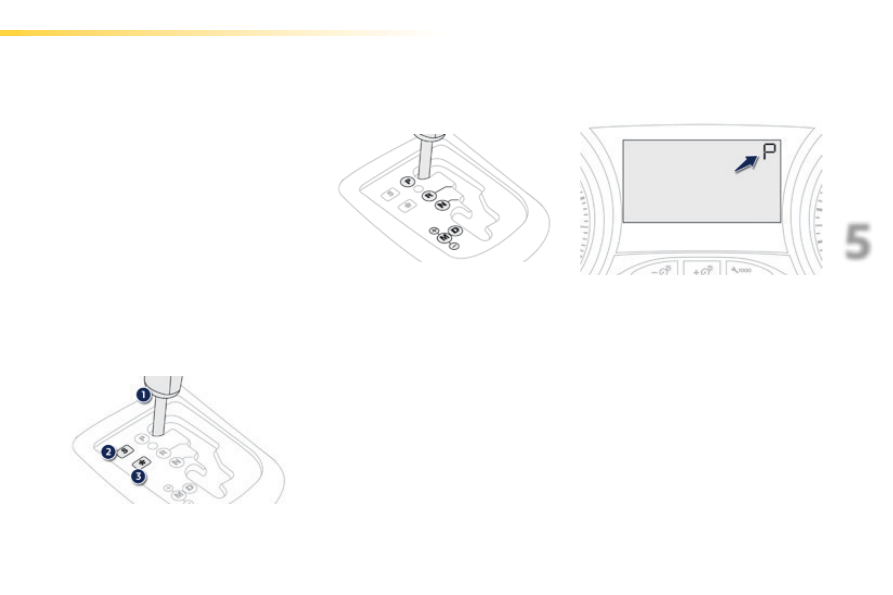Peugeot 2008 (2016 year). Manual - part 7

95
5
Driving
2008_en_Chap05_conduite_ed01-2016
Automatic gearbox (EAT6)
6-speed automatic gearbox which offers a
choice between the ease of fully automatic
operation, enhanced by sport and snow
programmes, or manual gear changing.
Two driving modes are available:
-
automatic operation for electronic
management of the gears by the gearbox,
with the sport programme for a more
dynamic driving style or the snow
programme to improve driving on slippery
surfaces,
-
manual operation for sequential changing
of the gears by the driver.
P. Park.
-
Immobilisation of the vehicle, parking brake
on or off.
-
Starting the engine.
R. Reverse.
-
Reversing manoeuvres, vehicle stationary,
engine at idle.
N. Neutral.
-
Immobilisation of the vehicle, parking brake
on.
-
Starting the engine.
D. Automatic operation.
M + / -. Manual operation with sequential
changing of the six gears.
F Push forward to change up through the
gears.
or
F Pull backward to change down through the
gears.
Gear selector positions
When you move the selector to select a
position, the corresponding indicator is
displayed in the instrument panel.
P. Park
R. Reverse
N. Neutral
D. Drive (Automatic operation)
S. Sport programme.
T. Snow programme.
1 2 3 4 5 6. Gears engaged during manual
operation
-.
Invalid value during manual operation
Displays in the instrument panel
Gear selector gate
1. Gear selector.
2. "S" (sport) button.
3. "
T" (snow) button.